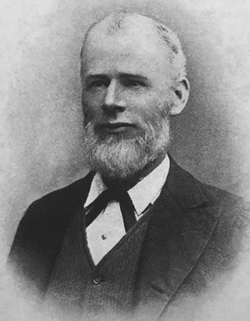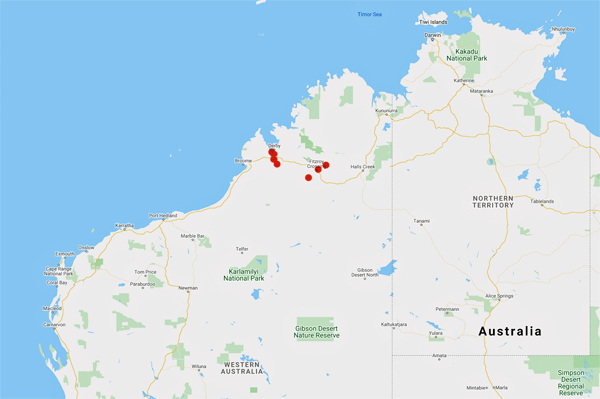
Council of Heads of Australasian Herbaria
Australian National Herbarium
Biographical Notes
 |
Council of Heads of Australasian Herbaria |
 Keartland, George Arthur (1848 - 1926)
Keartland, George Arthur (1848 - 1926)Born at Wellingborough, Northamptonshire, England, on 11 June 1848; emigrated to Australia, departing from Plymouth, England on 1 June 1850 with his parents on the Stebonheath, arriving at Port Adelaide, SA, on 15 September 1850; died at his residence 'Illamurta', Cramer Street, Preston (Melbourne), on 21 May 1926.
He completed his education at George
Street
Public School,
Fitzroy
(Melbourne). After some training as a
photographer and an apprenticeship to a printer,
George was employed by the Melbourne Age as
a compositor for more than 50 years,14 In 1871,
he joined the Melbourne Typographical Society
and was twice President of the Australasian
Typographical Society.
George married Margaret Jane Nichol at Brunswick (Melbourne).
on 11 June 1873. They had 11 chldren.
Although lamed by a childhood accident, George
could admirably acquit himself in the field, and he
developed a strong interest in natural history,
especialy ornithology. He joined the Field Naturalists Club of Victoria (FNCV)
in February 1886, was elected President
between 1907 and 1909, and led a number of
their expeditions.
He participated in the Clutb's expeditions to King Island, Bass Strait in
November 1887 and to the Kent Group, Bass Strait in 1890.
George published many articles in the Victorian Naturalist between 1889 and 1925, about his
experiences of his numerous excursions to Melton.
George is well-known for his participation as an expedition naturalist:
Firstly, on the successful Horn
Expedition, from Oodnadatta, SA, to the MacDonnell Ranges, NT, between May-August 1894.
Secondly on the ill-fated Calvert Expedition to northwest Australia in 1896 where he was listed as "naturalist and botanist".
In 1806 the South Australian Branch of the Royal Geographical Society of Australasia was
asked to organise the Calvert Scientific Exploring Expedition on behalf of a London-based
gold mining engineer, Albert Calvert, who had interests in Western Australia. He sponsored
the expedition to charter the unexplored central north of Western Australia with the hope of
finding gold-bearing country. The party of six, Lawrence A Wells (surveyor and leader),
Charles F. Wells (surveyor and second-in-command). George A. Keartland (naturalist and
botanist), George A. Jones (mineralogist and photographer), James Trainer (cook) and
Afghan Bejah Dervish (in charge of camels), set out with 20 camels on 13 June 1896 from
Cue and, on leaving Lake Way, headed towards the direction of Joannaa Spring. En route
Charles Wells and George Jones left the main party on a side trip 150 km westward to explore
uncharted country. They then headed northeast to cut across the tracks of the main party to
meet at Joanna Spring. However, they ran out of water, could not find their companions and
perished. Meanwthile, George and the remainder of the party continued as planned but were
also unable to find Joanna Spring, so as agreed continued towards Fitzroy River. But disaster
also overtook them. Within 283 km of their destination most of the camels had perished.
Abandoning all equipment, specimens and personal effects not essential for survival they
trudged on, reaching 'Noonkanbah' on the Fitzroy River on 6 November. The following year
Lawrence A. Wells returned and located the bodies of the missing men.
Source: Extracted from book: 'Passions in Ornithology: A century of Australian Egg Collectors' (2020), Mason & Pfitzner, Canberra. [consult for source references]
Portrait Photo: Extracted from: above, ex Vic. Nat.(1926) 43:plate 2.
Data from 21 specimens
